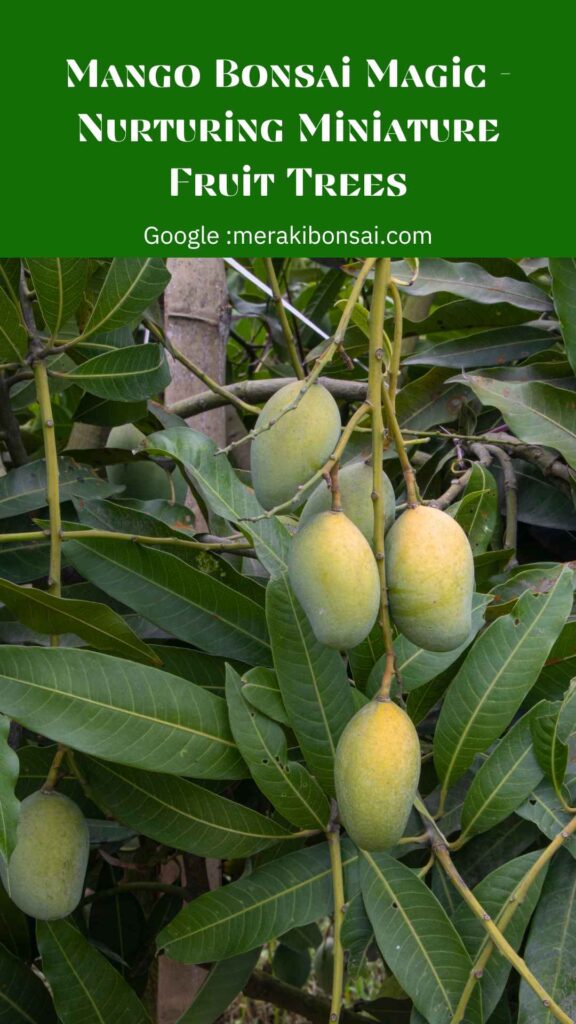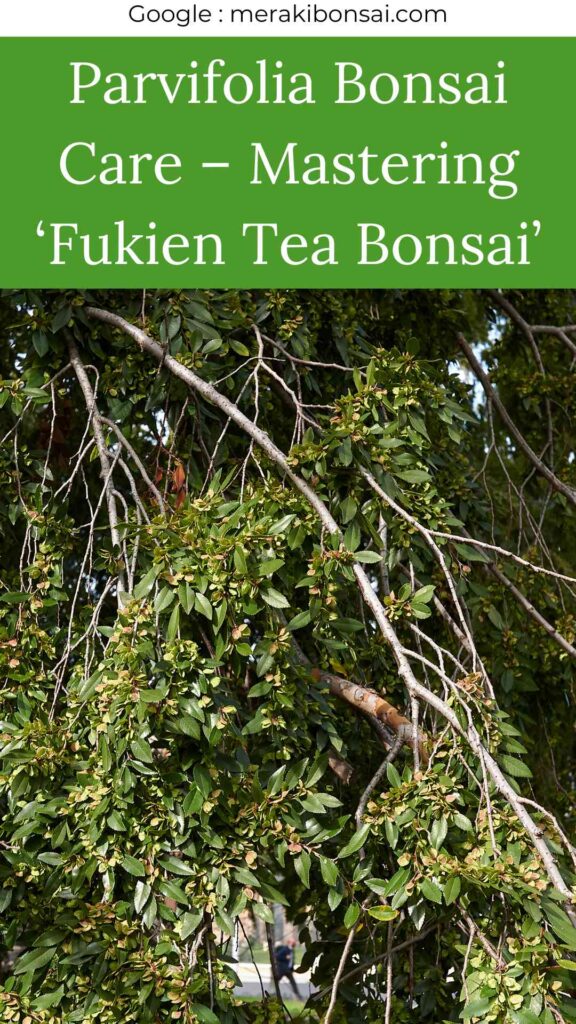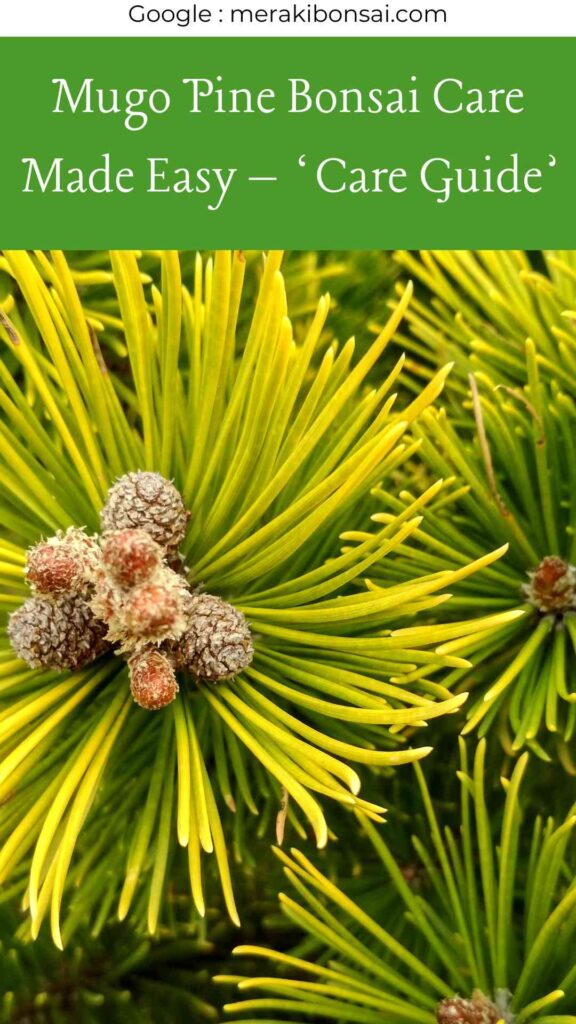
I’ve been tending to these little green wonders for over a decade now, and let me tell you, it’s been a journey filled with joy, patience, and a whole lot of love.
Today, I’m thrilled to share with you the enchanting world of mango bonsai trees. Yes, you read that right – those luscious, tropical fruits can be grown as bonsai!
Now, I know what you’re thinking. “Raima, can I really grow a mango tree in my living room?”
Well, my friend, that’s the magic of bonsai. It’s all about creating a miniature version of nature’s beauty, and yes, that includes mango trees.
So, grab a cup of coffee (or a mango smoothie), and let’s dive into the art of nurturing these pint-sized fruit trees.
First things first, let’s talk about why mango bonsai are so darn special. Imagine having a slice of the tropics right in your home.
These little trees not only add a unique touch to your decor but also gift you with the sweetest, juiciest mangoes you’ve ever tasted.
It’s like having a personal mango farm, minus the acres of land!
Now, growing a mango bonsai isn’t rocket science, but it does require some TLC. Let’s break it down step by step, shall we?
Choosing Your Mango Bonsai
Starting your mango bonsai journey begins with picking the right tree. You can either buy a pre-grown mango bonsai or start from a seedling.
If you’re a beginner, I’d suggest going with a pre-grown tree. It saves you time and gives you a head start.
When selecting your tree, look for one with a sturdy trunk and well-placed branches. These features will make shaping your bonsai easier down the line.
Some popular mango varieties for bonsai include Alphonso, Kensington Pride, and Irwin. These varieties are known for their compact growth and delicious fruit.
The Perfect Pot for Your Mango Bonsai
Alright, you’ve got your tree. Now, where do you plant it? The pot is more than just a home for your bonsai; it’s part of the overall aesthetic.
For mango bonsai, I love using ceramic pots with drainage holes. They’re not only functional but also add a pop of color to your bonsai display.
Check out this beautiful Ceramic Bonsai Planter Pot. It’s glazed to perfection and comes in various sizes to fit your mango bonsai just right.
The earthy tones complement the green leaves and vibrant fruits perfectly.
Soil and Drainage: The Foundation of a Healthy Bonsai
Now, let’s get down and dirty – we’re talking soil! Mango bonsai need well-draining soil to thrive.
A mix of akadama (a type of clay), pumice, and organic compost works wonders. This combo provides good aeration, retains just enough moisture, and offers nutrients for your tree.
Don’t forget drainage! Use a Bonsai Pot with plenty of holes to ensure excess water escapes. Waterlogged roots are a big no-no for mango bonsai.
They can lead to root rot, and trust me, you don’t want that.
Location, Location, Location: Where to Place Your Mango Bonsai
Mangoes love the sun, so find a spot where your bonsai can soak up those rays. A south-facing window is ideal.
During summer, you can even take your bonsai outdoors for some fresh air and natural sunlight.
But what about winter, you ask? That’s where Bonsai Indoor Lights come in handy.
These nifty gadgets provide the right spectrum of light to keep your mango bonsai happy when it’s too cold outside.
Jacaranda Bonsai: How to Cultivate Tiny Purple Paradises
Watering Your Mango Bonsai: The Goldilocks Principle
Watering a mango bonsai is like the story of Goldilocks – not too much, not too little, but just right. These trees prefer slightly moist soil, but they hate having “wet feet.”
Water your bonsai when the top inch of soil feels dry.
I recommend using a Watering Can with a fine nozzle. It allows you to control the water flow and avoid disturbing the soil.
Remember, the goal is to mimic a gentle rain, not a torrential downpour!
Feeding Your Mango Bonsai: A Balanced Diet
Just like us, mango bonsai need a balanced diet to grow strong and bear fruit.
During the growing season (spring and summer), feed your bonsai every two weeks with a balanced, water-soluble Fertilizer.
Look for one with equal parts nitrogen, phosphorus, and potassium (like a 10-10-10 mix).
In fall and winter, reduce feeding to once a month. Your bonsai is taking a little nap during this time, so it doesn’t need as much food.
Black Pine Bonsai: Expert Tips for Majestic Miniatures
Pruning and Shaping: The Art of Bonsai
Now comes the fun part – shaping your mango bonsai. This is where you channel your inner artist.
Pruning helps maintain the size and shape of your bonsai, promotes healthy growth, and encourages fruiting.
Invest in quality Bonsai Pruning Tools and Bonsai Pruning Scissors. These tools are designed for precision cuts, reducing the risk of damage to your tree.
Remember, always sterilize your tools before use to prevent the spread of diseases.
When pruning, focus on removing dead, diseased, or crossing branches. You can also pinch off new growth to encourage bushiness.
The key is to prune little and often, rather than going Edward Scissorhands on your bonsai once a year.
Douglas Fir Bonsai: Bringing the Forest to Your Windowsill
Wiring: Guiding Your Mango Bonsai’s Growth
Wiring is another technique to shape your mango bonsai. It involves gently bending branches and trunks to create the desired form. For this, you’ll need Anodized Aluminum Wire or Annealed Copper Wire.
Be gentle when wiring. Wrap the wire around branches at a 45-degree angle, starting from the base.
Leave the wire on for a few months, but check regularly to ensure it’s not cutting into the bark. Once the branch holds its new shape, remove the wire.
Pest Control: Protecting Your Mango Bonsai
Even in the cozy indoors, pests can find their way to your mango bonsai. Common culprits include spider mites, scale insects, and mealybugs.
Regular inspection is your first line of defense.
If you spot any unwanted guests, don’t panic. A gentle spray of water can dislodge many pests. For more stubborn infestations, use an Organic Insecticide.
It’s effective against pests but gentle on your bonsai.
Mastering Elephant Bush Bonsai Care: A Beginner’s Guide
Patience and Monitoring: The Key to Bonsai Success
Growing a mango bonsai is a lesson in patience. It might take a few years before you see your first fruits, but trust me, the wait is worth it.
In the meantime, enjoy watching your little tree grow and change.
Keep an eye on your bonsai’s health. A Soil Moisture Meter can help you avoid over or under-watering.
Yellowing leaves might indicate nutrient deficiency, while brown tips could signal over-fertilizing. The more you observe, the better you’ll understand your bonsai’s needs.
And there you have it, folks! Your guide to creating your own little mango paradise. Remember, every bonsai is unique, and part of the joy is learning and adapting along the way.
So, embrace the journey, cherish the process, and soon you’ll be sharing juicy mangoes with your friends (if you can resist eating them all yourself!).
Before I sign off, I want to take a moment to say thank you. Your interest and passion for bonsai keep me motivated to share my knowledge.
If you’ve found this guide helpful or simply want to support my work, consider buying me a coffee at Ko-fi. Every little bit helps me create more content and continue my bonsai adventures.
Now, let’s tackle some common questions about mango bonsai:
Q: How long does it take for a mango bonsai to bear fruit?
A: Patience is key! It can take 3-5 years for a mango bonsai to mature enough to produce fruit.
Q: Can I grow a mango bonsai from a store-bought mango seed?
A: Yes, you can! Clean the seed, plant it in a small pot, and once it sprouts, you can start training it as a bonsai.
Q: How often should I repot my mango bonsai?
A: Repot every 2-3 years in spring, or when the roots start circling the pot. This refreshes the soil and gives roots room to grow.
Q: My mango bonsai leaves are turning yellow. What’s wrong?
A: Yellow leaves can indicate overwatering, nutrient deficiency, or poor drainage. Check your watering habits and soil condition.
Q: Can mango bonsai survive in air-conditioned rooms?
A: Yes, but avoid placing them directly in the AC’s path. The cold air can shock the tree. Also, maintain humidity with a pebble tray or misting.
Q: How do I know when my mango bonsai fruits are ripe?
A: Ripe mangoes will have a sweet aroma and give slightly when gently squeezed. Color can vary by variety, so smell and touch are your best indicators.
Q: Can I propagate my mango bonsai?
A: Absolutely! Air layering and cuttings are common methods. Air layering is more reliable for mango bonsai.
Q: My mango bonsai isn’t flowering. What can I do?
A: Ensure it gets enough sunlight, proper nutrients, and a period of cooler temps (around 60°F) at night to encourage flowering.
Q: How big will my mango bonsai grow?
A: With proper pruning and care, you can keep your mango bonsai between 1-3 feet tall. The size also depends on your pot choice.
Q: Can pests from my mango bonsai spread to other houseplants?
A: Yes, they can. Isolate any infested plant, treat it promptly, and check nearby plants. Prevention is always better than cure!
There you have it – your mango bonsai journey starts now. Remember, every bonsai master started as a beginner. So, embrace the learning curve, cherish your little tree, and before you know it, you’ll be enjoying home-grown mangoes with a side of pride. Happy bonsai-ing, my friends!


